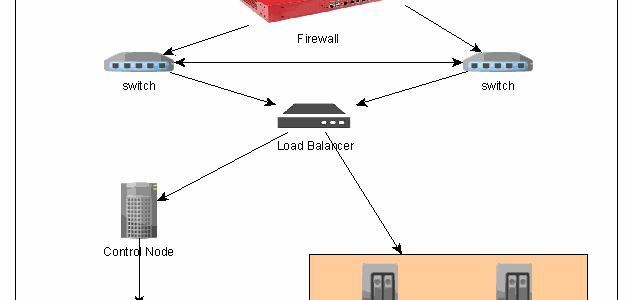
Our Own Private Cloud
There are many different organizations moving their infrastructure and application to different cloud vendor. Once the platform is being built on 1 cloud vendor, it is difficult to move to another environment. In recent years, many business owners found that the cost on using cloud platform is more expensive than hosting their own infrastructure with the price increment but also the expensive database / big data storage charged by cloud vendors by the growing data volume.
In order to maintain the scalability and flexibility, it is possible to host a private cloud environment free from “vendor lock-in”. Moreover, it is very important to apply their own security policy easily at the private cloud and with serious security concerns on the public cloud or any other cloud services connecting to the Internet. This project is not only preparing our own private cloud environment for different applications but also a proof-of-concept for a data science consulting company. For building the platform, there are a number of physical servers leading different roles including control, compute, block storage and object storage nodes.
Let’s see the architecture diagram as below.

Figure 1: Open Stack – Architecture for the Private Cloud in Archsolution Limited
For hardware, they are basically listed below:
| Node | No of nodes | Configuration | |
| 1 | Control | 1 | 1*Intel Xeon 2.2Ghz 10C20T, 64G Ram,
2* 256G SSD |
| 2 | Compute | 2 | 1*Intel Xeon 2.2Ghz 10C20T, 256G Ram,
2* 512G SSD |
| 3 | Block Storage | 1 | 1*Intel Xeon 2.2Ghz 10C20T, 32G Ram,
2* 128G SSD 4* 1Tb SSD |
| 4 | Object Storage | 2 | 1*Intel Xeon 2.2Ghz 10C20T, 32G Ram,
2* 128G SSD 6* 1Tb SSD |
We are using our stock of Supermicro and ASRock mainboards with Team-group SSD. For system memory, we are using ECC registered memory with Mircon chipset. Also, the raid cards are all LSI (Broadcom) 9200-8i and 9200-16i with both battery module and the hardware key for the SATA SSD drives. We don’t take SAS disk drive due to the cost concerns. You can contact us to order any of these items.
However, the SATA SSD is suggested to use either top-end models of Intel or Crucial for production environment. If you are going to invest SAS SSD, it is recommended to take Seagate Nytro series with many different choices for the disk size.
This is the first time for all machine running on top of SSD storage.
Also, this successful example is being replicated to a Data Science consulting company. We are helping them to deploy the solution at their lab and provide training to support their daily operations.

Figure 2: Open Stack architecture – for a data science consulting company
The data science consulting company is aimed to build their own private cloud with open source technology for research and training purposes. There are some vital R&D projects like IoT and AI running in this platform.
If it is required to have HADR, it is just needed to duplicate 1 set to another data center with the synchronization to maintain the information stored at near real-time basis.
For the management of Open Stack cloud, we use chef and compass to maintain the daily operation for the private cloud. With the continuous development of Open Stack framework and improvement in different Linux distro, Open Stack is now a reliable and scalable platform without any software investment like VMWare / Citrix / Microsoft, etc. Thus, this is a promising solution for enterprise with HADR features and live deployment of VMs. All-in-all, the private cloud solution should be a good answer for the public cloud security concerns and also the flexibility & scalability within a corporate environment.
